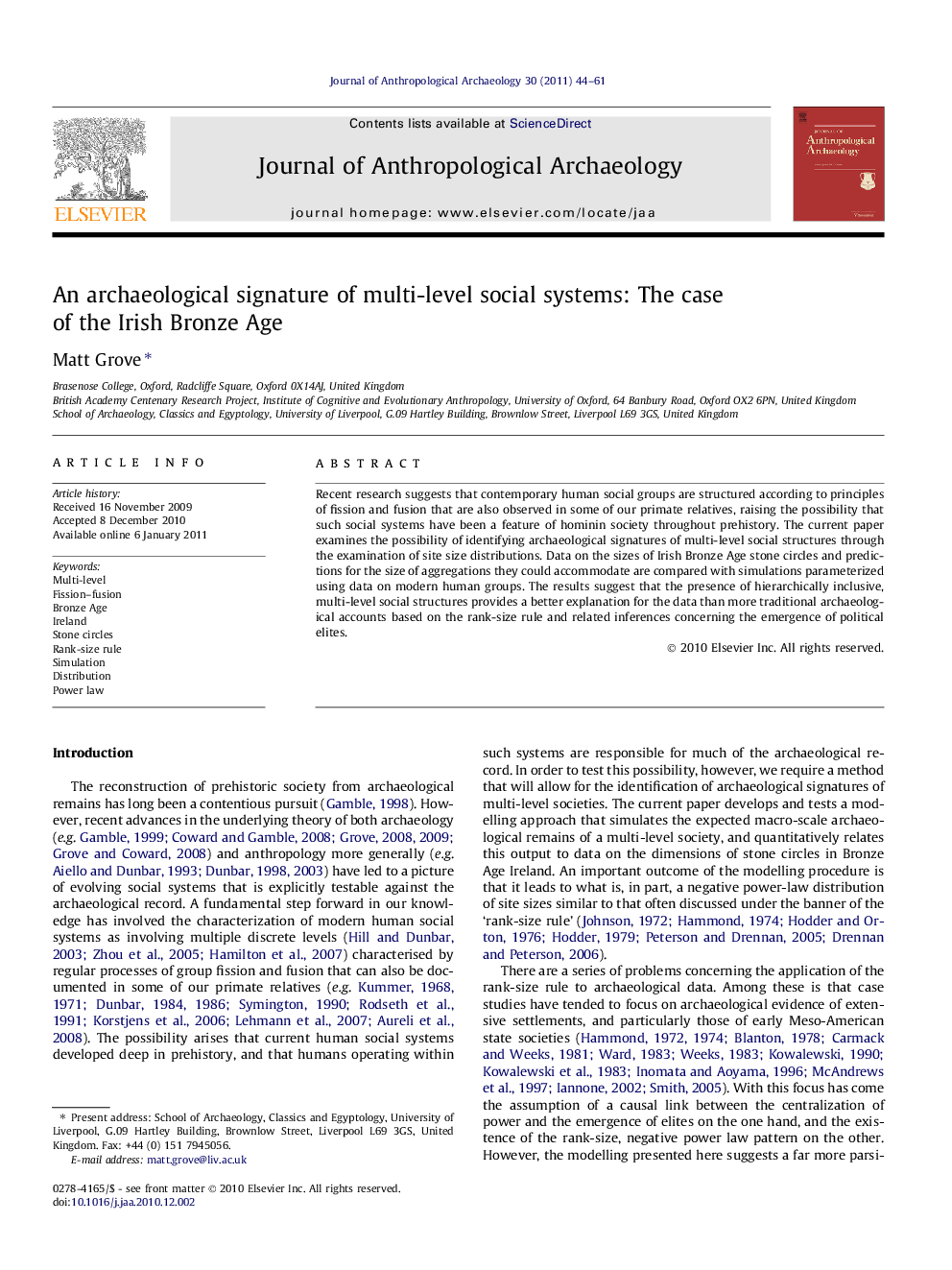| Article ID | Journal | Published Year | Pages | File Type |
|---|---|---|---|---|
| 1035057 | Journal of Anthropological Archaeology | 2011 | 18 Pages |
Recent research suggests that contemporary human social groups are structured according to principles of fission and fusion that are also observed in some of our primate relatives, raising the possibility that such social systems have been a feature of hominin society throughout prehistory. The current paper examines the possibility of identifying archaeological signatures of multi-level social structures through the examination of site size distributions. Data on the sizes of Irish Bronze Age stone circles and predictions for the size of aggregations they could accommodate are compared with simulations parameterized using data on modern human groups. The results suggest that the presence of hierarchically inclusive, multi-level social structures provides a better explanation for the data than more traditional archaeological accounts based on the rank-size rule and related inferences concerning the emergence of political elites.
Research highlights► A simulation model is developed that predicts the archaeological signature of a hierarchically nested, multi-level society. ► A case study of Irish Bronze Age stone circles provides an empirical example of an identical, empirical signature. ► This correspondence is discussed with reference to the nature of Irish Bronze Age society and the ‘rank-size rule’.
